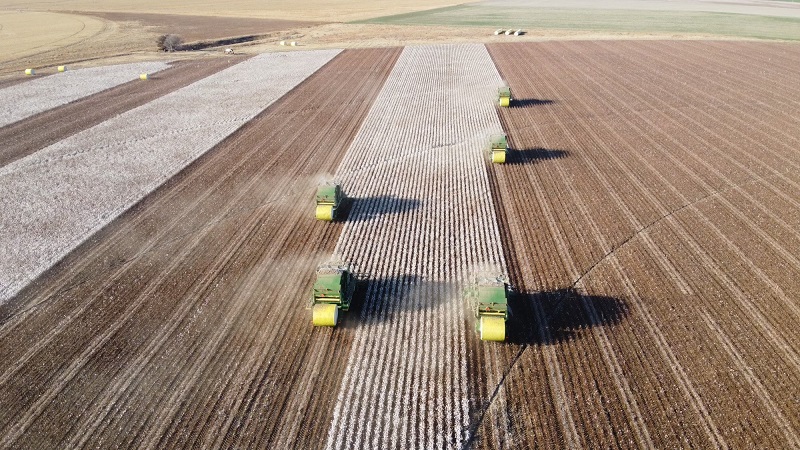Cleveland: Continued Clear Sailing for Cotton Prices
By Dr. O. A. Cleveland
Professor Emeritus, Mississippi State University
For Bayer CropScience
Cotton prices found mostly clear sailing last week on the heels USDA’s planting intentions report. Trading the new crop December contract led the market all the way to 145.00 cents before falling back to 136.00 cent level. Too, the nearby old crop May contract jumped above $2 again, working the 2.07 to 2.12 range at week’s end.
Changes to the fundamental cotton situation made in USDA’s April supply/demand report were highly anticipated in the market, thus, confirming what most traders had expected — a smaller world crop, increased world consumption and a decline in world carryover stocks. There is no reason to stop riding this bull. Yet, any real price increase will have to come from an unkind Mother Nature as she sorts out the planting and early crop development portion of the 2011 cotton production season.
This week will see the beginnings of widespread planting in the Mid-South. Yet, most eyes remain on West Texas and the Rolling Plains in the wake of growing drought problems. The $1.45.00 area has been used as a “near final” pricing point by me, but Mother Nature holds the price lid.
As suggested, USDA lowered its estimate of the 2010 U.S. crop by 215,000 bales, in line with the final ginnings report. Thus, the final 2010 U.S. crop will officially be recorded as 18.1 million bales. Additionally, U.S. consumption was raised 100,000 bales and is now estimated at 3.7 million bales. Too, U.S. consumption could well be raised another 50,000 to 100,000 bales later in the year. If so, then the 2011 consumption increase will 300,000 bales above the prior year’s 3.46 million bales.
USDA now estimates a record low carryover in U.S. stocks at 1.6 million bales as of July 31, 2010. The subject of current year “export sale buy backs” by U.S. shippers continues to surface in market fundamentals. The usual analysis of U.S. export sales data strongly suggests that the USDA estimate for 2010/11 exports should be raised as much as 200,000 to 300,000 bales. However, in accounting for increased export sales, USDA has taken the approach (totally reasonable) to estimate that “buy backs” would offset any new sales.
World carryover was lowered by 780,000 bales and is now estimated at 41.55 million bales. In just three years the world stocks-to-use ratio has dropped from some 55 percent to a two-decade low of 36 percent. As noted, U.S. stocks were lowered by 300,000 bales. However, foreign stocks of cotton were lowered by 480,000 bales and now stand at just 39.95 million bales. In addition to reducing its estimate of U.S. production, other decreases were in Turkey, Pakistan and the African Franc Zone.
World production is now estimated at 114.53 million bales with world consumption at 117.12 million bales. The estimate for consumption was an increase of 510,000 bales over the March estimate. Thus, solid consumption increases are noted not only in the U.S. but globally as well—a signal that bodes well for consumption into 2012.
USDA did not increase its estimate of the Chinese consumption. However, it did reduce Chinese carryover to 12.7 million bales, a 500,000 bale decline from March, and just a bit more than a three month supply—another a signal to stay will the bull. China spins 41-43 percent of the world’s cotton. However, their carryover has fallen to only some 30 percent of world carryover.








